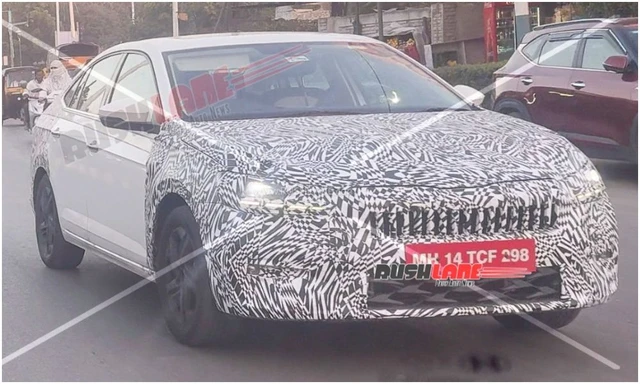10 Times Mitsubishi Built Awesome Sports Cars

- Winners of WRCs and other rallies are strewn with Mitsubishi car drivers
- Company had set records in the era when Toyota and Nissan ruled the world
- Lancer Evolution is a famous child, and no wonder 2 of them are on list
If we talk about Mitsubishi's most famous sports cars of all time, the following ten editions of Evolution come to mind. But this Japanese car company has so much more. The sales of the vehicles have always been a little low, but they made up for it in design and technology. Below is the list of a few cars that left the world mystified—
Lancer 1600 GSR in 1973

Photo Credit: commons.wikimedia.org
To start the list, the legendary first rally car of the Japanese company comes to mind. 1600 GSR was all the glory back in the 70s, and there was a good reason why. Available exclusively in two-door Sedan style, this sports car went off to win twice in the Safari Rally of Kenya, followed by four rallies in Australian Southern Cross Rallies.
Galant VR-4 in 1988

Photo Credit: www.flickr.com
A mid-size Sedan was all Mitsubishi needed to launch its sales and stand with Honda and Toyota. The Galant VR-4 was alive for over 40 years. Not only this, it brought pride to the Japanese when it took part and won in WRC rallies. In three years, it bagged six wins, standing out in the Finnish race of 1000 lakes.
3000GT VR-4 in 1990

Photo Credit: commons.wikimedia.org
For an affordable version of a sports car, Mitsubishi launched 3000GT VR-4, which went 0-60 mph in 5.4 seconds. It left all the race-heads amazed when presented in all its glory. It resembled supercars in having four-wheel drive and aerodynamics. Later upgrades added a twin-turbo engine, electrical suspensions, and a spyder version.
Starion in 1982

Photo Credit: commons.wikimedia.org
One of the most excellent and most underrated Japanese cars is the Starion. It was sold in the US by Conquest by Chrysler, Plymouth, and Dodge. The most outstanding feature of the car was the addition of electronically powered fuel injection and turbocharging. Starion brought a revolution for the Japanese cars in the world.
Eclipse in 1989

Photo Credit: commons.wikimedia.org
In Japan's history, a model inspired by and replacing Starion was the longest-running sports car, Eclipse. It was sold in the US with the badges of Eagle and Plymouth flaunting. This model was upgraded thrice to meet the expectations, and it did that very well.
Lancer Evo X in 2007

Photo Credit: commons.wikimedia.org
The end of the Evolution series marked the end of an era! When Mitsubishi launched its final - the tenth - edition of the legendary Evolution, it made the fans emotional. Its features mostly resemble the now modern technology used in sports cars. Being a limited edition, this model can be acknowledged by the unique badge on the front and the alloy wheels.
Colt GTi-16 Turbo in 1988

Photo Credit: commons.wikimedia.org
Fighting the top contender line with the smaller Peugeot 205 GTi and Renault 5 Turbo, Colt GTi-16 Turbo was the most performing car, if not the best looking. It had the vibe of being a small family-oriented car, but with the sporty touch that everybody loved.
Lancer Evolution VI (Tommi Mäkinen Edition) in 1999

Photo Credit: commons.wikimedia.org
The famous limited edition dedicated to Tommi Mäkinen for winning the WRCs for four years straight with different Evolution models. This special one mainly looked like the other Evolution models except for slight changes- a titanium turbine, a Momo steering wheel, 17 inches of Enkei wheels, and a unique "T. Makinen" logo on the seats.
Pajero Evolution in 1983

Photo Credit: commons.wikimedia.org
Do not be fooled by its simple looks, folks! This homologation model was built especially for the races, and it made Japan proud by winning in Paris-Dakar many times. The multi-link double-wishbone suspension made it completely different. It remained in the business for two years while selling only 2500 units.
Minica Dangan ZZ in 1968

Photo Credit: commons.wikimedia.org
This mini sports beast is based on the Kei car principle, which generally means a small turbocharged displacement engine. The lightweight chassis of Minica Dangan ZZ enables the car to speed up to 100 mph. However, the car only survived for four years.
Trending News
Latest News
 car&bike Team | Dec 14, 2025Top-Spec Tata Sierra Accomplished, Accomplished+ Prices RevealedRegardless of the powertrain combination chosen, all Tata Sierra Accomplished+ trims cost upwards of Rs 20 lakh (ex-showroom).2 mins read
car&bike Team | Dec 14, 2025Top-Spec Tata Sierra Accomplished, Accomplished+ Prices RevealedRegardless of the powertrain combination chosen, all Tata Sierra Accomplished+ trims cost upwards of Rs 20 lakh (ex-showroom).2 mins read car&bike Team | Dec 13, 2025Skoda Slavia Facelift Spied Testing Again Ahead Of DebutThe facelifted Slavia is expected to debut in 2026 as Skoda-VW India looks to refresh its India 2.0 range.1 min read
car&bike Team | Dec 13, 2025Skoda Slavia Facelift Spied Testing Again Ahead Of DebutThe facelifted Slavia is expected to debut in 2026 as Skoda-VW India looks to refresh its India 2.0 range.1 min read car&bike Team | Dec 13, 20252026 MG Hector Facelift Interior Previewed Ahead Of DebutLatest teaser video of the upcoming Hector facelift suggests minimal cosmetic changes to the interior as well as reveals a new alloy-wheel design.1 min read
car&bike Team | Dec 13, 20252026 MG Hector Facelift Interior Previewed Ahead Of DebutLatest teaser video of the upcoming Hector facelift suggests minimal cosmetic changes to the interior as well as reveals a new alloy-wheel design.1 min read Jaiveer Mehra | Dec 13, 2025Passenger Vehicle, Two-Wheeler Sales Surge In November 2025: SIAMBoth segments reported a growth in the region of 20 per cent, though year-to-date sales growth in FY2026 was notably flatter at around 3 per cent.1 min read
Jaiveer Mehra | Dec 13, 2025Passenger Vehicle, Two-Wheeler Sales Surge In November 2025: SIAMBoth segments reported a growth in the region of 20 per cent, though year-to-date sales growth in FY2026 was notably flatter at around 3 per cent.1 min read car&bike Team | Dec 12, 2025Nissan Entry MPV Design To Be Unveiled On December 18New MPV to be the first of three new models for India by Nissan, alongside the Tekton and a three-row SUV.1 min read
car&bike Team | Dec 12, 2025Nissan Entry MPV Design To Be Unveiled On December 18New MPV to be the first of three new models for India by Nissan, alongside the Tekton and a three-row SUV.1 min read Jaiveer Mehra | Dec 12, 2025New Mini Convertible Launched At Rs 58.50 LakhDrop-top variant of the iconic Cooper hatchback available in a single Cooper S spec.1 min read
Jaiveer Mehra | Dec 12, 2025New Mini Convertible Launched At Rs 58.50 LakhDrop-top variant of the iconic Cooper hatchback available in a single Cooper S spec.1 min read
 Janak Sorap | Dec 11, 2025Harley-Davidson X440 T First Ride Review: Smarter and SharperHarley-Davidson has taken the X440 and given it a more focused and engaging twist. The result is the X440 T—essentially the same platform but updated in areas that give the motorcycle more appeal and riders more thrill.5 mins read
Janak Sorap | Dec 11, 2025Harley-Davidson X440 T First Ride Review: Smarter and SharperHarley-Davidson has taken the X440 and given it a more focused and engaging twist. The result is the X440 T—essentially the same platform but updated in areas that give the motorcycle more appeal and riders more thrill.5 mins read Shams Raza Naqvi | Dec 10, 20252025 Mini Cooper Convertible Review: More Colour On Indian RoadsThe updated Mini Cooper Convertible is set to be launched in the Indian market in the next few days. We drive it around Jaisalmer for a quick review.1 min read
Shams Raza Naqvi | Dec 10, 20252025 Mini Cooper Convertible Review: More Colour On Indian RoadsThe updated Mini Cooper Convertible is set to be launched in the Indian market in the next few days. We drive it around Jaisalmer for a quick review.1 min read Bilal Firfiray | Dec 8, 2025Tata Sierra Review: India’s New Favourite?Marking its return after a few decades, the reborn Sierra has made everyone sit up and take notice. But is it worth the hype?10 mins read
Bilal Firfiray | Dec 8, 2025Tata Sierra Review: India’s New Favourite?Marking its return after a few decades, the reborn Sierra has made everyone sit up and take notice. But is it worth the hype?10 mins read Girish Karkera | Dec 4, 20252026 Honda Prelude First Drive: Domesticated Civic Type RA sporty-looking coupe built to give customers a taste of performance but not at the expense of everyday practicality.5 mins read
Girish Karkera | Dec 4, 20252026 Honda Prelude First Drive: Domesticated Civic Type RA sporty-looking coupe built to give customers a taste of performance but not at the expense of everyday practicality.5 mins read Seshan Vijayraghvan | Nov 29, 2025Mahindra XEV 9S First Drive Review: Big Electric SUV, Bigger ExpectationsThe XEV 9S lands at a time when the EV crowd is growing fast. It’s a big, born-electric, three-row SUV that starts under 20 lakh. It sits close to the XUV700 in size, but the brief is very different. Here’s what it’s like on the road.11 mins read
Seshan Vijayraghvan | Nov 29, 2025Mahindra XEV 9S First Drive Review: Big Electric SUV, Bigger ExpectationsThe XEV 9S lands at a time when the EV crowd is growing fast. It’s a big, born-electric, three-row SUV that starts under 20 lakh. It sits close to the XUV700 in size, but the brief is very different. Here’s what it’s like on the road.11 mins read

































































































































